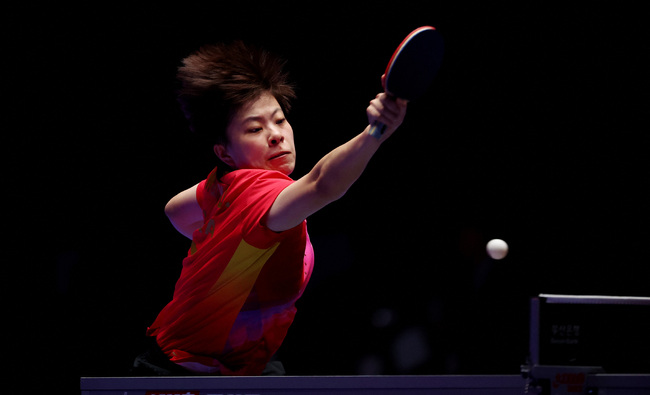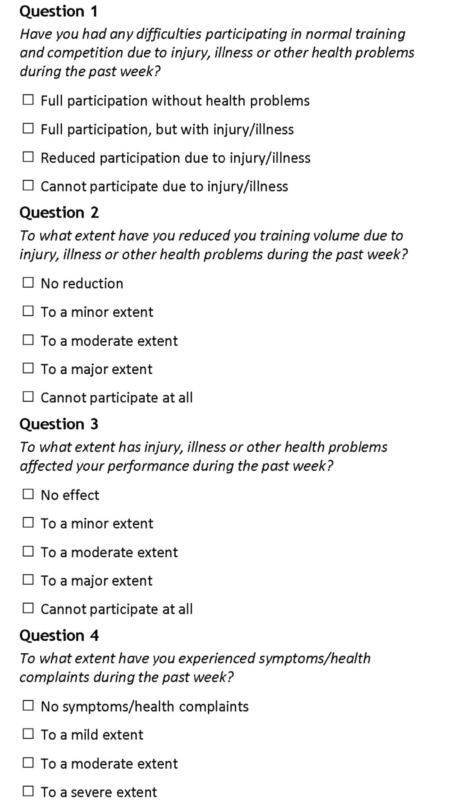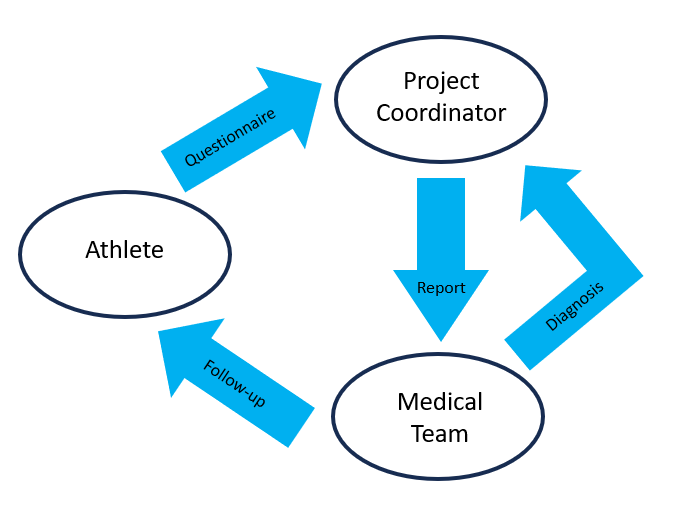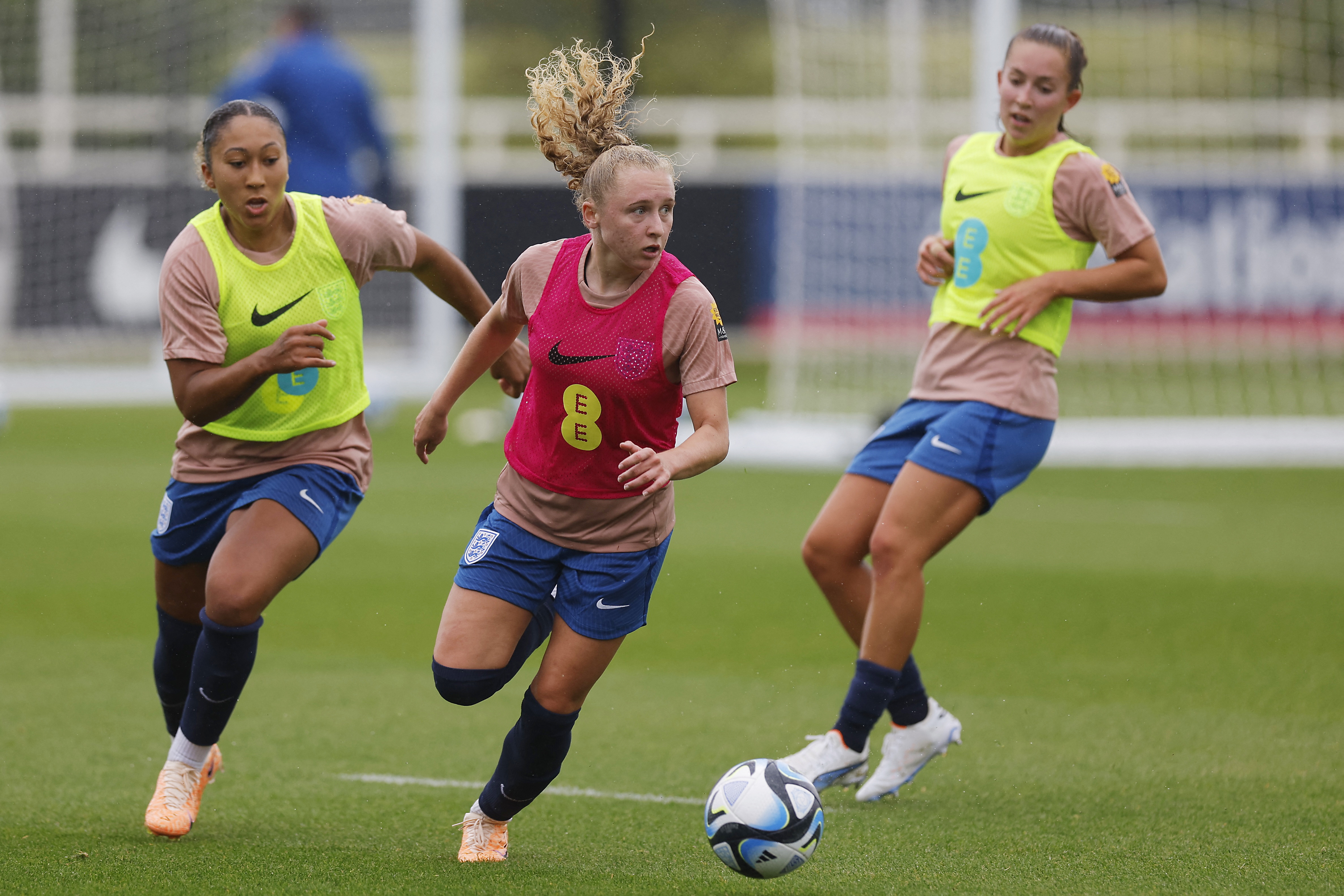You are viewing 1 of your 1 free articles
Beyond the Basics: Exploring Active Injury Surveillance
Injury surveillance is essential when managing athletes. However, it remains challenging due to the complex biopsychosocial interplay. Kelly Mackenzie looks at active injury surveillance as a strategy to stay ahead of the game.
Table Tennis - China’s Wang Yidi in action during her women’s teams final match against Japan’s Miu Hirano REUTERS/Kim Hong-Ji
Sporting injuries arise from external factors, whether deliberate or accidental and represent a noteworthy concern within social and economic contexts(1). There is a need to develop and improve systems or strategies to mitigate and track injury across various levels and codes of sport. Clinicians are at the forefront of injury surveillance, and creating pragmatic systems would improve athlete management.
Injury surveillance is systematically collecting, analyzing, interpreting, and disseminating injury-related information(2,3). It involves monitoring and tracking data on the occurrence, nature, and severity of injuries within a specific population or community. This information helps identify patterns, risk factors, and trends, enabling better prevention and intervention strategies to reduce the incidence of injuries and to better plan and distribute resources in team or community environments.
The medical team at the Oslo Sports Trauma Research Centre (OSTRC) has found active surveillance to be the most effective method of monitoring their athletes. It is the system currently used by the Norwegian Olympic team(4,5). They developed a basic questionnaire covering injury and illness questions (see figure 1)(6). The medical team assesses athlete health through regular completion of the questionnaire. If the clinicians flag any athlete through the questionnaire, they contact them to ensure the issue is appropriately and timeously managed and treated. Then, the Norwegian Olympic team medical team reaches out to the treating medical practitioner and collects and collates more detailed information. The athletes see the value of the central database and consistent care, leading to an 84% week-on-week response rate from the athletes involved(4).
With this central data collection point, athletes based around the world, outside of Olympic seasons, still have their personal and team medical history in one place. This effective data collection provides valuable information about injuries or illnesses, offering insights for diagnosis, treatment, and prevention strategies (see figure 2).
Active surveillance is more effective than passive surveillance systems which rely on the voluntary reporting of injuries by individuals or healthcare providers. Passive surveillance may be less resource-intensive but can lead to underreporting.
Exploring active surveillance opens the door to crucial insights that enhance the medical team’s comprehension of optimal management strategies for individual athletes and teams. Active surveillance provides medical professionals with valuable information, such as:
- Early detection: Timely identification of illness or injury enables prompt intervention and treatment, potentially preventing illness or injury progression.
- Incidence rates: This information is crucial for understanding the prevalence and impact of health issues.
- Risk factors: Clinicians can identify risk factors such as age, activity levels, environmental exposures, or underlying health conditions.
- Effectiveness of interventions: Tracking patients over time allows clinicians to assess the effectiveness of interventions.
- Patterns and trends: Understanding these patterns can guide healthcare providers in developing targeted prevention strategies and optimizing treatment approaches.
- Patient-specific data: Information on previous injuries, treatment response, and individual risk factors can assist in developing personalized care plans.
- Long-term outcomes: This involves tracking the recovery process, identifying potential complications, and ensuring sustained well-being.
Clinicians collect and utilize the information to guide injury management, allowing for good quality, informed decision-making regarding diagnostics, treatment plans, and rehabilitation strategies. Early intervention due to timely detection of illness and injuries can prevent the progression of conditions, reduce complications, and improve overall patient outcomes. Furthermore, they can implement targeted preventive strategies by identifying risk factors and patterns. This may involve personalized advice on lifestyle modifications, exercise routines, or other measures to minimize the risk of injuries or illnesses. Monitoring patient progress over time allows for adjusting rehabilitation plans based on individual responses. This tailoring of interventions ensures that rehabilitation efforts are effective and aligned with the patient’s needs. Active surveillance encourages ongoing communication between healthcare providers and athletes or teams. The engagement fosters a collaborative approach to care, where patients actively monitor and manage their health, improving the efficacy and buy-in from the athlete and team.
Understanding the incidence and prevalence of specific health issues helps allocate resources efficiently. Clinicians can prioritize interventions based on the prevalent health concerns within their patient population.
Implementation
Implementing active injury surveillance in a medical practice or team involves systematically collecting, analyzing, and using data to identify and monitor injuries. Clinicians must consider the following steps to integrate active injury surveillance effectively:
- Define objectives: Clearly define the injury surveillance program objectives. Clinicians must determine which specific injuries or conditions to monitor.
- Establish a team: Form a dedicated team responsible for the surveillance program. This team may include healthcare providers, data analysts, and other relevant staff. The make-up of the team is dependent on the available resources. However, clinicians can implement a successful surveillance program even in environments with limited resources. Technology can aid in creating simple questionnaires that athletes can complete on their mobile devices. If access to technology is limited, clinicians can use paper questionnaires that athletes can complete before starting training each day.
- Select surveillance methods: Choose appropriate methods for data collection. This could involve utilizing electronic health records (EHRs), patient surveys, incident reports, or a combination of these methods.
- Develop a case definition: Clearly define what constitutes an injury or condition. Having a standardized case definition ensures consistency in data collection.
- Create or adopt data collection tools: Develop forms or tools for collecting relevant information. These could include patient demographics, injury details, severity, and contributing factors.
- Implement training: Train healthcare providers and staff on the surveillance methods, case definition, and data collection tools. Ensure that all stakeholders understand the importance of accurate and consistent data collection.
- Integrate with EHR systems: If possible, integrate your surveillance program with existing EHR systems to streamline data collection and analysis. This can improve efficiency and accuracy.
- Establish reporting mechanisms: Implement a reporting system for healthcare providers to submit data regularly. This could include incident reporting forms, online portals, or other quick and easy reporting mechanisms.
- Data analysis: Regularly analyze the collected data to identify trends, patterns, and potential areas for intervention. This step may involve statistical analysis to determine significant findings.
- Feedback and communication: Provide regular feedback to healthcare providers and relevant stakeholders regarding the surveillance findings. This communication is crucial for fostering a proactive approach to injury prevention.
- Intervention strategies: Develop and implement intervention strategies to prevent or mitigate injuries. These strategies could include changes in clinical practices, educational programs, or other targeted interventions.
- Evaluate and modify: Periodically evaluate the program’s effectiveness. Clinicians must adjust and adapt the program according to feedback, changing circumstances, and the evolving needs of the medical practice or team.
- Compliance with regulations: Ensure the surveillance program complies with relevant privacy and regulatory requirements. Protect patient confidentiality and adhere to data protection laws.
In today’s fast-paced world, cutting-edge technology enables the seamless implementation of active surveillance throughout diverse sporting communities. A prime illustration involves the utilization of a Google form, designed to be completed in under a minute, which is regularly dispatched to athletes via their smartphones. This straightforward approach serves as an uncomplicated means of gathering essential data.
The intricacy arises during the subsequent stages, encompassing the analysis, dissemination, and utilization of the collected data. The process varies based on the composition of the medical team and the resources at their disposal. Fortunately, tailoring these steps to meet the athlete’s unique needs can be accomplished with relative ease.
The OSTRC has identified three key components that contribute to the effectiveness of a successful active approach:
- An experienced, devoted medical team,
- Regular (weekly) athlete contact,
- A mutually beneficial system for the athletes, coach, and medical team and is not just primarily in place for data collection or research purposes.
Active surveillance transforms clinical practice by shifting from reactive to proactive models. It empowers healthcare providers with timely information, enhances patient engagement, and contributes to more effective and personalized healthcare delivery. Resource allocation may limit the implementation of advanced active surveillance programs, but clinicians must be pragmatic and utilize the available resources.
Active surveillance is a mindset and approach that innovative and proactive teams use to optimize athlete health. Effective communication is the cornerstone of successful injury surveillance. When athletes believe that the program serves their individual needs, they will likely buy into the project and allow clinicians to enhance healthcare.
References
- Chinese J Traumatol. 2020;23(3):168-175.
- IOC. International Olympic Committee Consensus Statement Methods for Recording and Reporting of Epidemiological Data on Injury and Illness in Sports 2020 ( Including the STROBE Extension for Sports.; 2020.
- Br J Sports Med. 2012;(May 2014).
- Br J Sports Med. 2013;(May 2014).
- Br J Sports Med. 2020:390-396.
- BMC Medical Research Methodology (2021). 21:252
Newsletter Sign Up
Subscriber Testimonials
Dr. Alexandra Fandetti-Robin, Back & Body Chiropractic
Elspeth Cowell MSCh DpodM SRCh HCPC reg
William Hunter, Nuffield Health
Newsletter Sign Up
Coaches Testimonials
Dr. Alexandra Fandetti-Robin, Back & Body Chiropractic
Elspeth Cowell MSCh DpodM SRCh HCPC reg
William Hunter, Nuffield Health
Be at the leading edge of sports injury management
Our international team of qualified experts (see above) spend hours poring over scores of technical journals and medical papers that even the most interested professionals don't have time to read.
For 17 years, we've helped hard-working physiotherapists and sports professionals like you, overwhelmed by the vast amount of new research, bring science to their treatment. Sports Injury Bulletin is the ideal resource for practitioners too busy to cull through all the monthly journals to find meaningful and applicable studies.
*includes 3 coaching manuals
Get Inspired
All the latest techniques and approaches
Sports Injury Bulletin brings together a worldwide panel of experts – including physiotherapists, doctors, researchers and sports scientists. Together we deliver everything you need to help your clients avoid – or recover as quickly as possible from – injuries.
We strip away the scientific jargon and deliver you easy-to-follow training exercises, nutrition tips, psychological strategies and recovery programmes and exercises in plain English.













